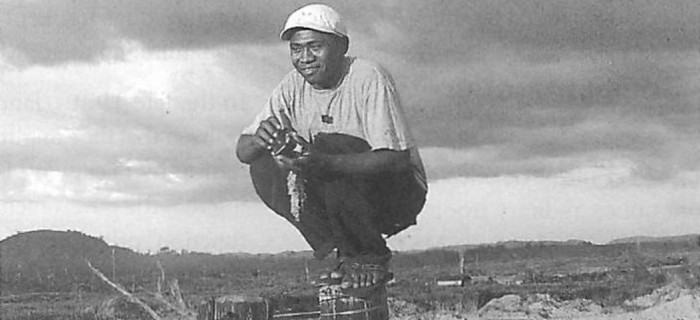Now It Is Time: The MST and Grassroots Land Reform in Brazil
Food First Backgrounder, Spring 2003, Vol. 9, No. 2
Forty years ago, everyone in Brazil but the rich and the generals knew that Brazil needed an agrarian reform. It was the only thing that would bring this country around to use its land rationally, economically. We threw that chance away and went through years of dictatorship instead. What if Brazil had had its reform starting then? What kind of a country would we have been able to construct! Instead, we have all this… violence, this waste. Now it is time. We shouldn’t waste another forty years. – Small businessman, Northern Brazil
Since the late 1970s, more than one million people in Brazil have transformed their lives. They have done so by organizing peaceful protests that have forced the Brazilian government to redistribute approximately 20 million acres of agricultural land to 350,000 families and to assist them further in creating new livelihoods. These people have vastly improved the quality of education and health care available to their families, achieving these gains by successfully challenging the institutions and some of the most powerful people of Brazil, a nation of 175 million people and one of the world’s ten largest economies.
The million people—men, women, and children—who are members of the MST (o Movimento dos Trabalbadores Rurais Sem Terra, the Landless Workers’ Movement) have faced down police, the military, and gangs of hired gunmen, suffering imprisonment, beatings, and sometimes death. Instead of waiting for the government to meet its long-standing promises to redistribute land, members of the MST have occupied land claimed by others, continuing the occupations until the government has met their immediate needs for land. And they continue to do so: at this writing more than 80,000 MST families who have not yet benefited from land distributions are occupying land in the continuing battle to make agrarian reform an enduring reality in Brazil. In addition, approximately 200,000 families who are not members of the MST have also received land in the agrarian reform sparked by the MST.
The Social Function of Land
Although MST members often have had to confront police, military troops, and the court system to gain land, the MST strategy of land occupations does not usually break the law but instead is based on forcing the government to comply with the law.
Brazil has for nearly five centuries been plagued by a radically unequal distribution of land. Wealthy landholders ruled the countryside with impunity, grabbing land through fair means and foul, intimidating and even murdering those who stood in the way of their dominance of the land. They held sway over state legislatures and courts and there were few who could challenge them. They were encouraged by their dominance and impunity to use the land wastefully, retarding the development of the economy and trapping millions of Brazilians in poverty. To combat this problem, successive Brazilian national governments beginning in the nineteenth century asserted the idea (which also had roots in the colonial legal tradition) that land, in order to be legally claimed by an owner, had to “serve its social function.” Brazilian governments repeatedly promised to make this concept meaningful by redistributing land to the poor, but the power of landholding families and their domestic and foreign allies has kept the governments from fulfilling their promises.
Stay in the loop with Food First!
Get our independent analysis, research, and other publications you care about to your inbox for free!
Sign up today!In the late 1970s, landless rural people realized that they might be able to achieve reform by occupying land and demanding that the government apply the “social function” principle. They were also often able to successfully challenge the titles held by wealthy landowners because so many of the titles were based on fraud. The key was organization. Land occupations needed to be carried out by enough people—usually several hundred or more—and en list enough community support that the government and large land holders could not displace them except through embarrassingly large and politically costly jailings or massacres.
Catholic priests inspired by liberation theology (a movement within the Church emphasizing social justice) and lay political activists helped the landless organize these occupations. Once proven successful, occupations began to break out throughout Brazil, and by 1984 the landless were able to create a national organization, the MST. Significant agrarian reform had begun for the first time in Brazilian history.


 Help Food First to continue growing an informed, transformative, and flourishing food movement.
Help Food First to continue growing an informed, transformative, and flourishing food movement.




